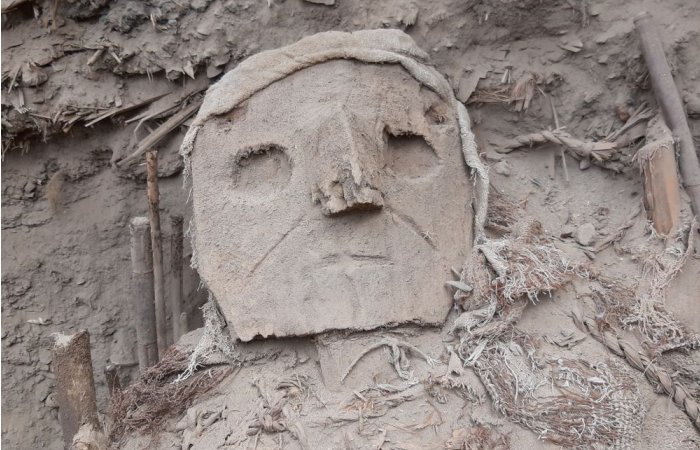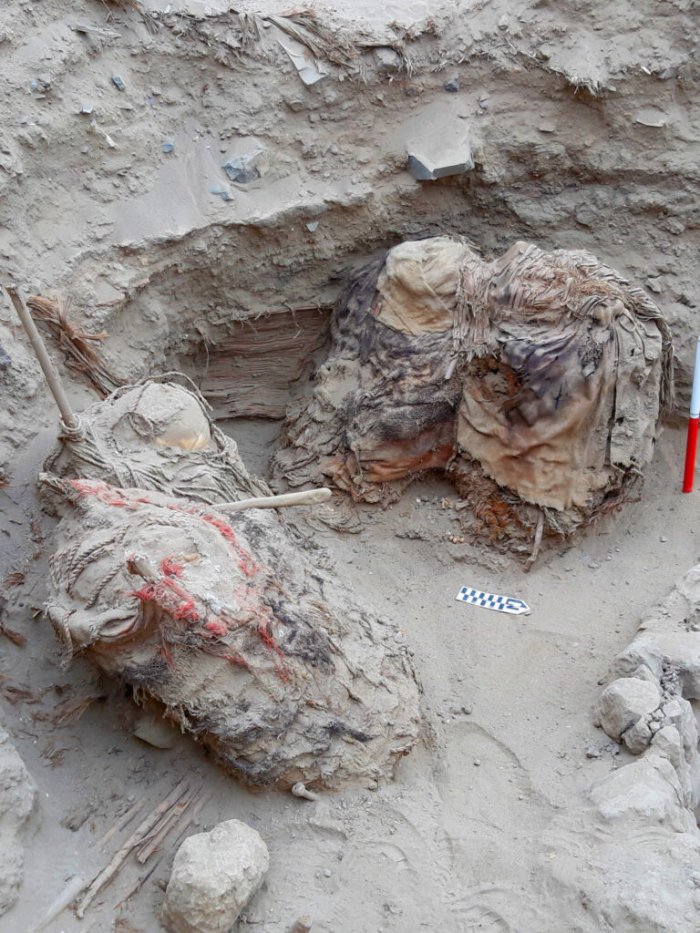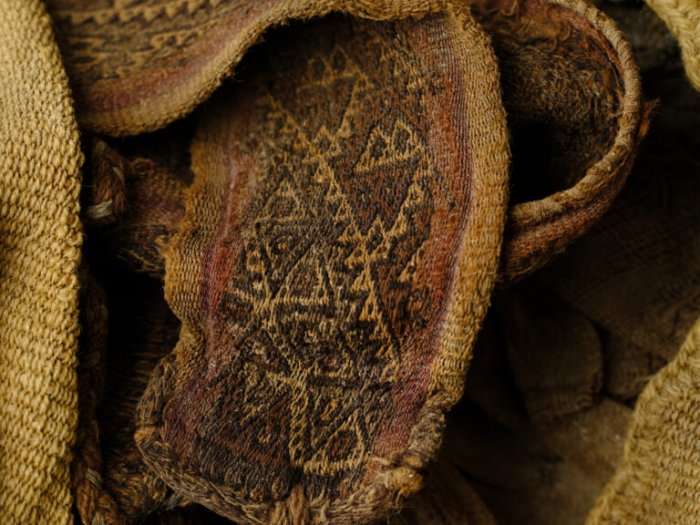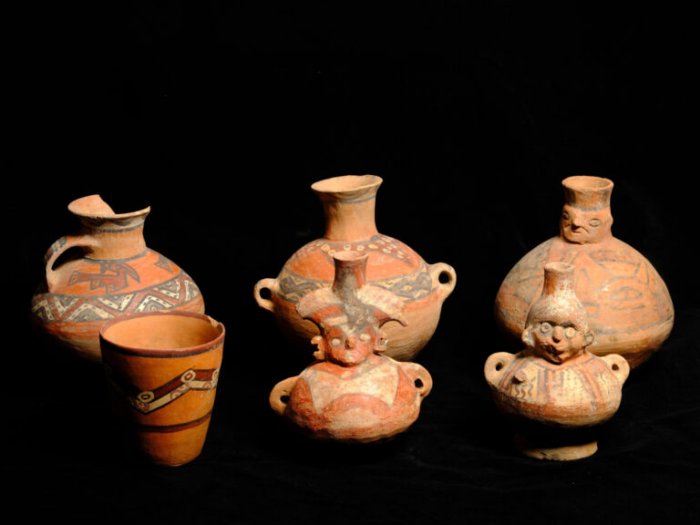Conny Waters – AncientPages.com – Polish archaeologists excavating at Pachacámac, (Pachakamak, in Quechua), which means ‘one who gives life to the earth’, an archaeological site south-east of Lima in Peru, have found 72 intriguing burial bundles. Inside some of the burials, the research team uncovered curious carved masks placed on false heads.

Containing people of both genders, several were found wearing carved masks or adorned with ceramics placed on ‘false heads’. Credit: PUCP
The archaeologists employed by the Pontifical Catholic University of Peru, and led by Professor Krzysztof Makowski state the finds were made in a cemetery complex close to the so-called Painted Temple raised by the people of the Wari Empire.
The pre-Hispanic Wari culture Wari flourished from about 500 A.D. to 1000 A.D., in the region of Ayacucho region and stretched over Cusco’s rainforest in Peru.
The Wari people spoke their own language and produced beautiful tapestries and weavings that survived well and can be seen in museums.
The Wari Empire relied on innovative technology, and its architecture focused on constructing earthquake-resistant temples and other buildings. They often used polygonal blocks, which influenced the later Inca building style.
As previously reported on Ancient Pages, during recent excavations at Pakaytambo in southern Peru archaeologists have uncovered a Wari ritual complex replete with a d-shaped temple, patio-group architecture, and monumental platform construction. The 1,200-year-old temple housed Wari religious officials and people linked to the Wari Empire.
The latest archaeological discovery sheds more light on the burial customs of the Wari people. The burial bundles, known as ‘fardos,’ are highly significant and shape our understanding of the cultural development of the pre-Hispanic Andes.

Credit: Miłosz Giersz – CC BY-SA 4.0
To Professor Makowski and his archaeology team, his colleagues Cynthia Vargas, Doménico Villavicencio and Ana Fernández this is a great discovery, considering so many other burial sites in the region were damaged during Colonial-era efforts to eradicate pagan beliefs.
“Aware that much of the site had been robbed and desecrated, Makowski and his colleagues zoned in on a plot where an Incan period wall had collapsed as they had theorized that the piles of adobe bricks would have made the area difficult to rob.
Their hypothesis proved correct. Notable for their near perfect state of preservation, it’s been revealed that some were initially buried individually and others later in groups.
Containing people of both genders, several were found wearing carved masks or adorned with ceramics placed on ‘false heads’.

Decorative fabric detail inside the burial bundle of one of the mummies. Credit: Miłosz Giersz – CC BY-SA 4.0
So far, the discoveries seem to contradict commonly accepted facts. Presenting a different character during the period of the Wari Empire, the uncovered fardos appear to demonstrate that Pachacámac was not a sacred city for the whole time between the construction of the Old Temple and the arrival of the Spanish,” the First News reports.
The discovery of two staff carved in wood and decorated with images of two dignitaries wearing Tiwanaku-type headgear is also important. “The staff were found in a settlement layer contemporary with the cemetery and a short distance from it. They were located in a votive deposit covered with a layer of fragments of the tropical shell Spondydus princeps, imported from Ecuador. The style of these staff is comparable to the famous cult image known as the ‘idol of Pachacámac’. This wooden carving depicts two deities standing on a high pedestal. Each of them looks towards the other like the Roman Janus, but the two figures are clearly joined back to back and each has a different character, i.e. a celestial aspect versus a telluric aspect, and are possibly also of different Sєxes,” Archeowiesci Poland reports.
By examining the uncovered burial bundles, researchers will gain insights into the social position of those buried, their health as well as any evidence of conflict or, even, domestic violence.

Some of the earthenware found in grave settings. Influences from the southern Andes and the northern coast of Peru are evident. Credit: Miłosz Giersz – CC BY-SA 4.0
Nineteen burial bundles will now bebe transferred for laboratory tests that will include CT scans – these will allow for computer analysis to be made without opening them.
“In the pre-Hispanic Andes, no-one died; everyone was predestined to continue living in the parallel world of their ancestors.
See also: More Archaeology News
The condition was that family members did their duty and prepared the deceased to continue living – the prevalence of burial bundles in the cemeteries on the Peruvian coast in the late period (i.e., between 800 and 1531/32) and at the beginning of the colonial period, in the case of burials of all age groups and both Sєxes, is evidence that this duty was taken very seriously,” Professor Makowski told Archeowiesci Poland.
Written by Conny Waters – AncientPages.com Staff Writer





